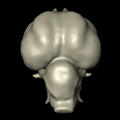Making science culturally appropriate
I would imagine that being able to work with human brain tissue would be difficult enough, but doing so in New Zealand has its added hurdles. As a foreigner, I was not initially aware of the cultural implications of being able to source and work with human brain tissue.
Some issues surrounding the use of human brain tissue in New Zealand were raised in an article in Science Magazine in 2007. For Māori
“the head and brain are tapu,” a sacred body part that must not be tampered with.
Working with human brain tissue, therefore raises ethical implications that are quite unique to New Zealand.
Is the value of the research sufficient to justify a breach of tapu?
When Melanie Cheung began working on her PhD project in Huntington’s disease, she was confronted with this very specific question, and embarked on finding a solution. The solution was found in the development of tikanga appropriate for the research needs.
According to the 2006 Census, Māori are the second largest ethnic group in New Zealand representing 14.6% of the population, and Māori culture forms an integral part of the country. It is therefore not surprising that it also influences the way we do science. Overcoming barriers through open dialogue and consultation and a willingness to understand cultural differences has been fundamental to the progress of human neuroscience research in New Zealand.
Sources:
- Tikanga in the Laboratory. MJ Cheung, HM Gibbons, M Dragunow, RLM Faull. MAI Review 2007 1, Article 1.
- The Reductionist-holistic worldview dilemma. M Cheung. MAI Review 2008 Issue 3
- Michael Walker: Seeking Nature’s Inner Compass. J Bohannon. Science 318:904-907



[…] Kubke, Making Science Culturally Appropriate Fascinating snippet on using human brain tissue in New Zealand and intersections with the Maori […]
[…] Kubke, Making Science Culturally Appropriate Fascinating snippet on using human brain tissue in New Zealand and intersections with the Maori […]